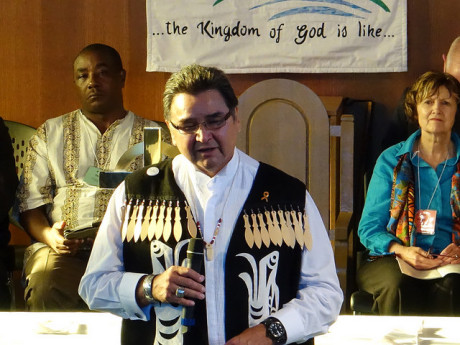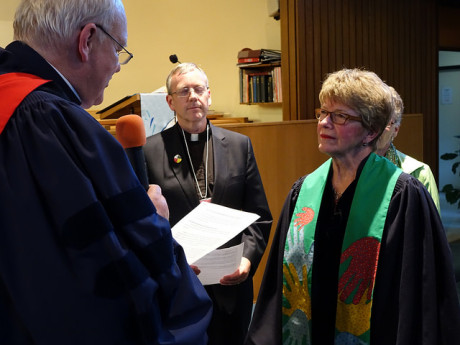In his sermon during opening worship of the 141st General Assembly, outgoing Moderator Rev. Dr. Stephen Farris urged the gathered commissioners and guests to allow Jesus to be visible in the discussions and debates to come.
Speaking on Hebrews 2:5-13, he said: “What does the Holy Spirit use to make Jesus visible? I think there can be only one answer and that answer is a church. The church. This church.
“And here’s the question: if strangers were to come and look at our General Assembly as a picture of the church what would they see? I will not give you advice about any of the contentious issues that will face this General Assembly. I will not give you advice about what our decision should be but I will give advice about how our decisions should be reached. They should be reached so that people can see Jesus. Will they look at the way this General Assembly speaks? More importantly will they look at the way this General Assembly listens? Will they look at the way this General Assembly loves one another even when they disagree profoundly with one another and in that love in the midst of disagreement will they see Jesus?”
General Assemblies traditionally begin with prayer, worship and communion. An elder from the Musqueam First Nation offered a welcome to his people’s traditional territories, and said “as we are here tonight we are all one heart, one mind and one family.” On behalf of the church, Farris thanked him with a gift and acknowledged that the assembly was meeting on “the unceded lands of your people.”
As part of his last acts as Moderator of the 140th General Assembly, Farris spoke of the year he spent crossing the country visiting churches and his international trip to Burma (Myanmar). The time was bookended with two Truth and Reconciliation Commission events. The final event, which included the release of the TRC’s summary report and recommendations had ended the previous day in Ottawa. “Both experiences were in equal measures difficult and moving,” he said.
He recalled presenting the church’s 1994 Confession to Aboriginal Peoples to Phil Fontaine, former Grand Chief of the Assembly of First Nations, at last year’s General Assembly. It was provided in six languages—in English and French, the official languages of Canada, in Korean, the language of two of the church’s presbyteries, and in Dakota, Ojibwe and Plains Cree, the most common languages spoken by children at the church’s residential schools. Farris said he would make no new promises that day because the church needed to work harder on keeping the ones it had already made. But he asked Fontaine to accept the copies of the Confession as a prayer. As he took them, Fontaine quietly said to him “I accept this as a prayer.”
As the final TRC event drew to a close on June 3, Justice Murray Sinclair, chair of the commission, presented copies of the summary report to the church representatives. As he accepted it, Farris said he told him quietly “I accept this with a prayer that next time we’ll do better.”
“And Justice Sinclair replied to me, very quietly, ‘you already are.’ I found that a deeply touching moment.”
Farris’s final act as Moderator of the 140th General Assembly was to install Rev. Karen Horst as Moderator of the 141st General Assembly.
As Moderator, Horst shared encouraging words for the other nominees on this year’s ballot for Moderator, joking that she could hardy believe it when on April 1—April Fool’s Day which also happens to be the day the ballots are counted—she got a call saying she would stand as sole nominee. She expressed hope that the others whose names appeared on the ballot this year will be nominated again by presbyteries in the future.
The service concluded with a unison prayer. It reads in part:
“As we discern your will, give us
wisdom and courage,
quietness of spirit,
integrity of purpose,
clarity in speech,
grace in our interactions,
and joy in service,
that all we do may be for
the building up of the body of Christ.”



